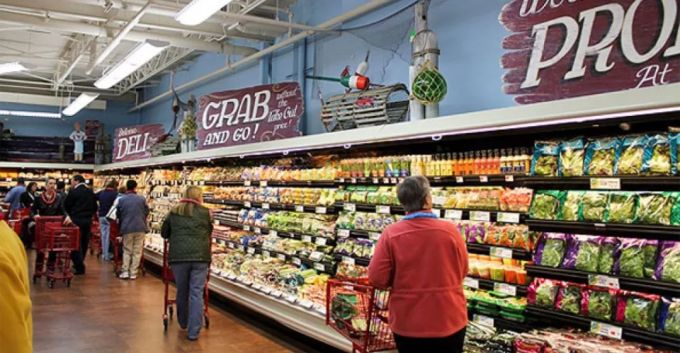
According to a recent report by the Associated Press, a public opinion poll jointly conducted by the Associated Press and the National Center for Public Opinion at the University of Chicago has revealed a major life pressure currently faced by the American people - the soaring prices of groceries. Surveys show that about half of Americans believe that high food prices have become a heavy burden in their daily lives. This phenomenon, from the perspective of commercial food, highlights multiple levels of problems and is worthy of our in-depth analysis.
The increase in food prices is not an isolated incident; it reflects deep-seated problems throughout the entire commercial food chain. From the perspective of the production process, the reduction in agricultural product production caused by global climate change, the increase in production costs, and the logistics bottlenecks in the supply chain have all pushed up food prices to varying degrees. Especially in today's globalized world, any fluctuation in any link may trigger a chain reaction, which will eventually be reflected in the price tags that consumers face.
In the distribution process, the operating costs of large retailers and supermarkets are also constantly increasing, including the rise in rent, labor costs, electricity and other expenses, all of which will be passed on to the selling prices of goods. The intensity of market competition makes it difficult for merchants to attract consumers simply by lowering prices while pursuing profits. This undoubtedly exacerbates the problems brought about by the soaring food prices.
In addition, consumers' purchasing behavior also affects food prices to a certain extent. With the improvement of living standards, consumers' demands for food have shifted from merely satisfying quantity to pursuing quality. The market demand for high-quality foods such as organic and green foods is constantly increasing. However, the production costs and selling prices of these products are often higher than those of ordinary foods, which to a certain extent has pushed up the overall food price level.
However, the problems brought about by the increase in food prices are not unsolvable. From the perspective of commercial food, optimizing supply chain management, enhancing production efficiency, and reducing operating costs are all feasible solutions. For instance, enhancing the disease and pest resistance and yield of agricultural products through technological means can effectively reduce production costs. By optimizing logistics routes and reducing intermediate links, distribution costs can be lowered. Reasonable competition among merchants and appropriate supervision by the government also help maintain market order and prevent disorderly price increases.
It is worth noting that the increase in food prices has a particularly significant impact on low-income families. When income is limited, an increase in food expenditure often squeezes the spending on other necessities of life and even affects the basic quality of life. Therefore, from the perspective of social responsibility, the commercial food industry should also actively seek solutions to mitigate the impact of rising prices on vulnerable groups.
In conclusion, the soaring food prices are not only an economic issue but also a social one. It involves multiple aspects of the commercial food industry and requires us to conduct in-depth analysis and reflection from multiple perspectives. While pursuing economic benefits, we cannot neglect social responsibility and the actual needs of consumers. Only through comprehensive reform and innovation can the fundamental solution to this problem be found.
Under the current circumstances, both the government, enterprises and consumers need to pay sufficient attention to the issue of food prices. The government should strengthen market supervision to prevent price manipulation and unfair competition. Enterprises should actively assume social responsibilities and reduce costs through technological innovation and management optimization. Consumers, on the other hand, can cope with the pressure brought by rising prices through rational purchasing and reasonable planning. Only in this way can we jointly address the challenges brought about by the rising food prices and maintain social harmony and stability.

Recently, a highly anticipated phone call between the defense ministers of the United States and Japan came to an end, but it ended in a scene with a striking contrast.
Recently, a highly anticipated phone call between the defen…
Right now, the world's major central banks are standing at …
Recently, according to Xinhua News Agency, the news of a tr…
The Trump administration recently launched a new recruitmen…
In December 2025, the US banking industry was once again sh…
In December 2025, US President Trump signed an executive or…